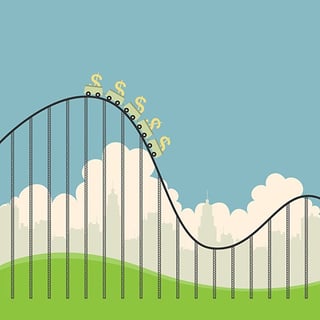
According to a 2017 study provided by the World Bank, emerging countries are expected to continue to represent an increasingly larger portion of world gross domestic product (GDP) and market capitalization. The World Bank is projecting global growth at 2.9% over the next few years. This is largely due to the accelerating growth expectations for emerging markets of 4.7%.
Advanced economies of the United States, Euro Area, and Japan are expected to grow at a combined 1.7%. Emerging markets is clearly the driving force behind world economic growth.
The decision to have a fund focused solely on emerging markets is a question we get on occasion.
Our recommendation tends to favor NOT having an emerging markets fund on the investment menu. Wait… Why not? You just said that it’s becoming more and more important!
Below is a table showing the annual returns for the region over the past 10 years:
|
Year |
Return |
|
2017 (YTD 7-10-17) |
+18.59% |
|
2016 |
+11.19% |
|
2015 |
-14.92% |
|
2014 |
-2.19% |
|
2013 |
-2.60% |
|
2012 |
+18.22% |
|
2011 |
-18.42% |
|
2010 |
+18.88% |
|
2009 |
+78.51% |
|
2008 |
-53.33% |
|
2007 |
+39.42% |
As the above table highlights, investing in emerging markets can provide for an exciting (or scary!) roller coaster ride. Emerging markets tend to be one of the most volatile investments, owing to both the general riskiness of the companies and changes to currency values, which are driven by issues arising from less predictable governments.
We do believe having exposure to the emerging markets is vital for long-term investment success. However, we also need to construct a strategy that dampens the impact of poor decisions by participants stemming from behavioral mistakes.
Two common mistakes made by participants are 1) 1/n fund allocation and 2) allowing emotions (fear and greed) dictate timing of investments. In either case, the overall riskiness of emerging markets tends to exacerbate these tendencies. A strategy we favor is obtaining exposure to emerging markets via international equity funds that have a consistent level of exposure to emerging markets, typically an amount equal to the percentage the region represents of the world’s market capitalization. (As of today, this is about 10% to 20% depending on the index.) We find that this strategy of investment menu design gets participants more consistency at the appropriate level of exposure to emerging markets, escaping the two common mistakes noted earlier. This line of thought can also be applied to other asset classes such as commodities, risky bonds such as high yield and structured products, and other more volatile investments.
During periods of strong returns for any asset class, such as emerging markets over the past two years, it can be tempting to put such investment options onto the investment menu. However, a more productive strategy would be thinking through the investment menu design with a long-term perspective and focusing on how to manage participant behavior (and mistakes).

